
Deadnettle: planting, pruning and care
Summary
Deadnettle, in a nutshell
- Lamium and Lamiastrum are semi-evergreen perennials with a very decorative groundcover effect, both for their foliage and flowering.
- Some species with stolons, such as the golden dead-nettle type, tend to spread, whereas others form compact cushions or upright clumps up to 50 cm.
- These perennials provide attractive ground cover, easy to establish in light woodland shade or even in sun when soil is sufficiently cool.
A word from our expert
Lamium or deadnettles are perennial groundcover plants valued for their flowering and attractive deciduous golden or silver foliage that brighten shady corners. The ample, dentate foliage of some species may resemble nettles, but typical galea-shaped flowers of Lamiaceae, pink, white, yellow or purple, leave no doubt about their identity, especially since foliage is rather soft and pleasant to the touch.
Lamium are generally semi-evergreen perennials that carpet soil and fill gaps between plants with disconcerting ease. They form an ideal blanket bog to run around large-leaved perennials such as hostas, Arum italicum, Lunaria rediviva or Brunnera macrophylla. In spring, their silvery or golden mossy foliage is studded with small crowns or spikes of pink flowers in Lamium maculatum Beacon Silver, white in White Nancy, pale yellow in Lamiastrum galeobdolon, etc.
Lamiastrum galeobdolon, nicknamed yellow nettle, has a strong tendency to wander due to rapid growth of its stolons forming tapetum up to 30 cm thick, in cool, relatively shaded woodland. However cultivars such as Hermann’s Pride or Silberteppich are less invasive, forming clumps in small cushion habit 30–50 cm wide and 15–20 cm high. Maculate dead-nettles (Lamium maculatum) likewise do not produce stolons but form dense cushions with delicate downy foliage topped by spikes of pink or white flowers. They grow in partial shade and can also be used as border or bedding plants, reaching 15–25 cm high depending on variety. These plants can also be combined with spring bulbs that will provide a floral display before foliage regrowth. Little-known oval dead-nettle produces vigorous green clumps up to 50 cm high and 50–60 cm wide, topped by delicate wine-coloured or white spikes.
Lamium are plants very easy to grow that avoid chore of weeding in shaded areas and grow where lawn lacks light. They prefer any fresh, light and well-drained soil. Although some species such as Lamium maculatum tolerate sun, avoid direct sun.
But Lamium still have surprises: planted with potato, Lamium maculatum White Nancy repels Colorado potato beetles and improves flavour of potatoes.
Description and botany
Botanical data sheet
- Latin name Lamium, Lamiastrum
- Family Lamiaceae
- Common names deadnettle, white dead-nettle, red dead-nettle, yellow dead-nettle
- Flowering between April and September
- Height between 0.20 and 0.50 m
- Sun exposure shade to partial shade or even sun
- Soil type any light soil, humus-bearing, even calcareous
- Hardiness Good (-20 °C)
Lamiums have a wide distribution across Europe, Asia and North Africa.
Genus Lamium comprises more than 150 species, including perennials as well as rhizomatous annuals such as purple dead-nettle (Lamium purpureum), an adventive common weed visible year-round in crops. It belongs to family of sage and mint, namely Lamiaceae (formerly Labiatae), contrary to what vernacular names – white dead-nettle, red dead-nettle – might suggest. Nettle, included in family Urticaceae, has, besides being urticating, similar dentate, cordate leaves opposite and decussate, but these are accompanied by whitish stipules (small flaps) at their base, unlike those of Lamiums. Nettle flowering is also clearly distinct from that of Lamiums, with insignificant greenish flowers gathered in male or female aments.
Lamiums have square-section stems that root very superficially. Plant tends to creep via rootstock and sometimes to produce stolons that increase rate of spread, as in golden dead-nettle (Lamiastrum galeobdon). Petiolate leaves, often downy and puckered, are cordate (lamina base heart-shaped), opposite or in whorls, with crenate margins, 1.5 to 3 cm long. Silver maculation forming various patterns on foliage is the appeal of these groundcovers, brightening shady or semi-shady spots beneath larger plants. These neutral tones set off delicate pastel flowering that runs between April and September depending on cultivar. Lamium maculatum ‘Cannon’s Gold’ produces solid golden foliage, while species Lamium orvala bears dentate, uniformly deep green leaves tapering to a pointed tip. The latter forms clumps 40–50 cm high by 50–60 cm wide that could be mistaken for nettle except that it bears large pink flowers with a white “tongue” spotted with purple, evoking delicacy of an orchid flower in April–May.
Flowers about 10 to 25 mm long are gathered in whorls or short terminal spikes in shades of pink, purple, white or even pale yellow for Lamiastrum galeobdon, sometimes included in genus Lamium. Corolla is wolf’s-mouth-shaped, formed of two fused lips, the upper incurved like a galea and the lower lip pendulous or U-shaped. Flowering is attractive to bees, butterflies and birds.

Some dead-nettles: Lamium maculatum ‘White Nancy’ (photo PAP), Lamium ‘Cannon’s Gold’ (photo PAP), Lamium maculatum ‘Purple Dragon’ (photo L. Enking) and Lamiastrum galeobdolon ‘Florentinum’
Fruits are tetrakene (dry fruits divided into four equal parts).
Name “Lamium”, of Greek etymology, evokes a throat or a gaping mouth.
Main varieties of Lamiums
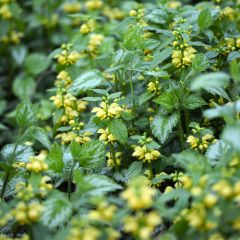
Lamium galeobdolon Florentinum - Yellow Deadnettle
- Flowering time july, august
- Height at maturity 25 cm
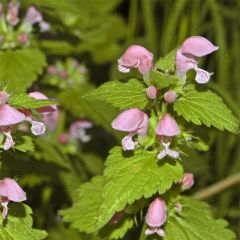
Lamium maculatum Cannons Gold - Spotted Deadnettle
- Flowering time june to october
- Height at maturity 15 cm
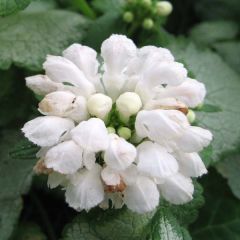
Lamium maculatum White Nancy - Spotted Deadnettle
- Flowering time may to august
- Height at maturity 25 cm
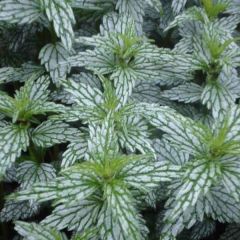
Lamium galeobdolon Hermanns Pride - Yellow Deadnettle
- Flowering time july, august
- Height at maturity 40 cm
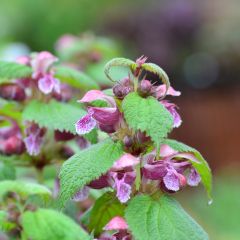
Lamium orvala
- Flowering time june, july
- Height at maturity 50 cm
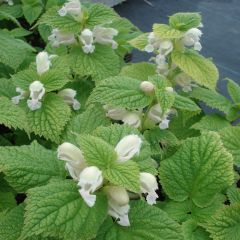
Lamium orvala Album
- Flowering time june to august
- Height at maturity 50 cm
Discover other Lamium - Dead-Nettle
View All →Available in 0 sizes
Available in 1 sizes
Available in 2 sizes
Available in 2 sizes
Available in 2 sizes
Available in 1 sizes
Available in 1 sizes
Available in 1 sizes
Available in 1 sizes
Available in 1 sizes
Planting
Where to plant Lamiums?
Install these perennial ground-cover in semi-shade to shade while retaining some light to set off erect, shrubby or other upright plant. They tolerate sun in sufficiently cool soil but look better in shade. Prefer cool to moist soil but without excess water, rich and light in texture but some species such as golden dead-nettle colonise almost any disadvantaged area such as banks or tops of low walls.
When to plant?
Plant preferably in spring or autumn.
How to plant?
This plant is easy to grow and within reach of novice gardener. Count on about 3 to 5 buckets per square metre depending on vigour of species to cover entire plot.
- Immerse buckets in a bowl of water to thoroughly moisten them.
- Dig a hole three times wider than rootball and loosen soil around with tines of garden fork.
- Add a few handfuls of sand and gravel to ensure good drainage around roots. In heavy soil, opt for planting on a raised mound or within a rockery.
- Add manure or well-rotted compost if soil is sandy.
- Place plant in planting hole.
- Backfill with soil and firm lightly.
- Water.
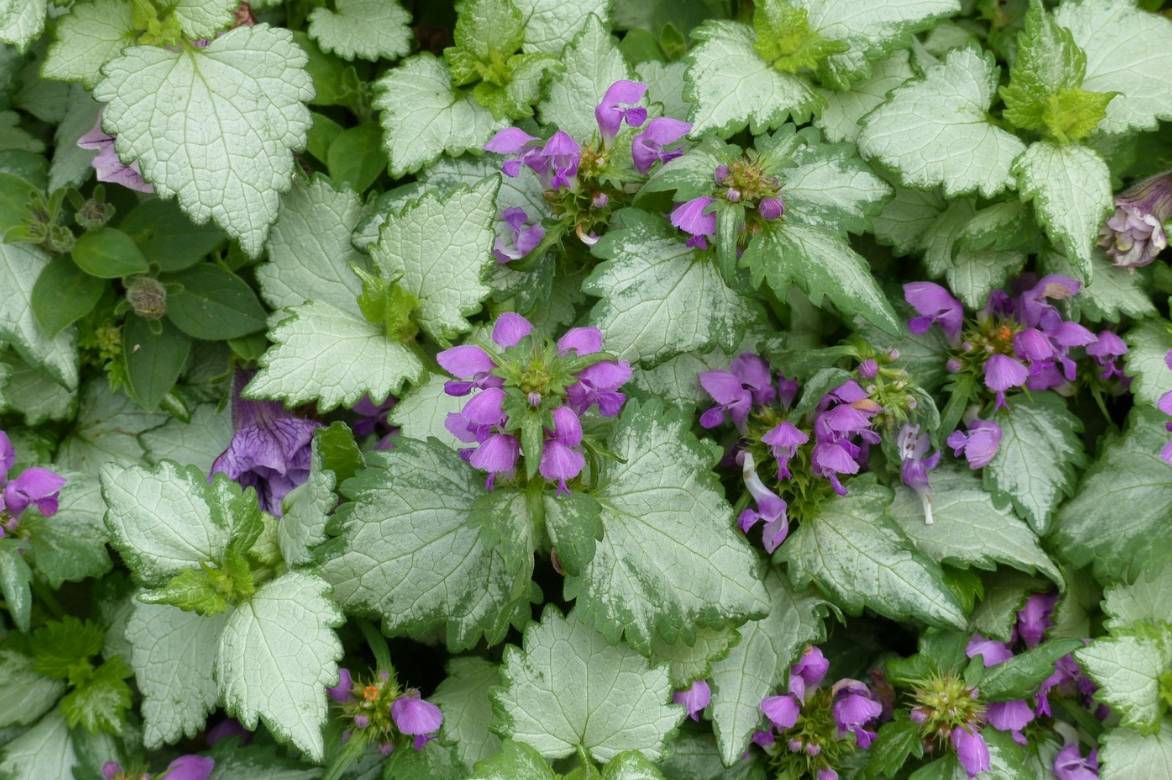
Lamium maculatum
Care
Caring for lamiums is single and consists of:
- shorten Lamium stems in spring to encourage new shoots and produce more compact young plants,
- fertilise from time to time with a handful of compost or other organic fertiliser.
Propagation: dividing dead-nettles
Propagating Lamium is very simple by carrying out the clump division on those with rhizomatous roots or by detaching stolons on Lamiastrum galeobdon. You can operate in early spring or in September.
Dividing the clump
- Drive a well-sharpened spade into the soil to detach a division, or remove the young plant completely to make handling easier, then use a knife or a pruning shear.
- Replant both clumps straight away and water well.
Uses and associations
Lamiums always make delightful groundcovers. They require no maintenance (except where foliage has dried) and are perfect for filling space between bushes. Maculate Lamiums in particular offer a range of silvery or golden shades speckled with pink, purple or white flowers, and grow at a reasonable, manageable rate (20 cm high and up to 100 cm wide) which allows them to be used at front of beds to form edging, ribbons or as small groupings, in front of Heucheras or hardy geraniums.
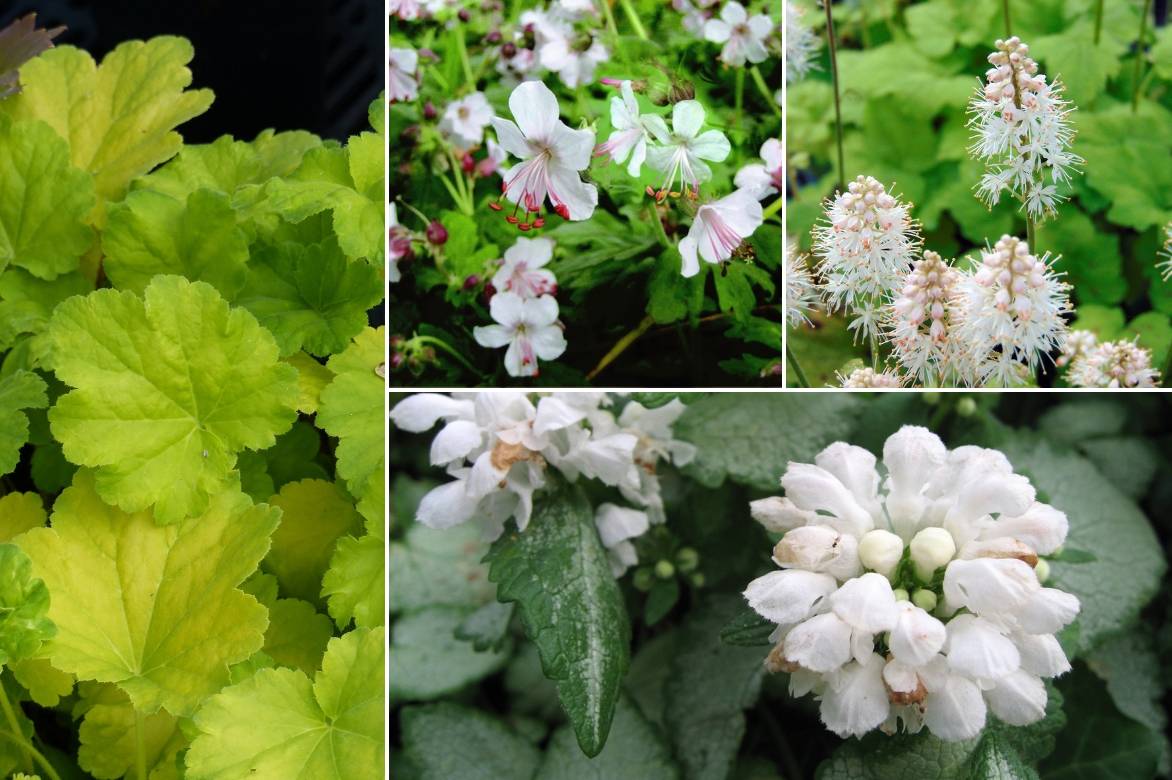
An example of a shade combination: Heuchera ‘Sweet Tart’, Geranium macrorrhizum ‘Spressart’, Tiarella cordifolia ‘Moorgrün’ and Lamium maculatum ‘White Nancy’
They pair well with other woodland plants such as dwarf honeysuckle ‘Chic et Choc®’, Campanula lactiflora, Japanese anemones or Astilbes. All sizes provide options to create a harmonious bed. However, in a rockery in part shade, at the base of a wall, they also fit among groundcover perennials and alone brighten forgotten corners of their luminous tapetum.
Golden Lamiastrum (Lamiastrum galeobdolon ‘Florentinum’) is a <strong=much more spreading perennial and stoloniferous, with growth comparable to that of periwinkle. This excellent groundcover is very hardy, colonises bank slopes rapidly and grows very well at base of trees even in dry conditions. You can therefore pair it with narcissus bulbs, notably Narcissus ‘Actaea’ with which it forms a perfect duo or create a pretty patchwork of colour alongside other robust perennials such as Geranium macrorrhizum ‘Spessart’, Epimedium, Fuchsia magellanica or ferns such as Dryopteris erythrosora or Matteuccia struthiopteris (ostrich fern)…
→ Discover other ideas for pairing with Lamium in our advice sheet !
Did you know?
Young leaves and flowers of white dead-nettle (Lamium album) can be eaten in salads. Flowering tops are used to treat gout (joint inflammation) and have expectorant, calming, wound‑healing and astringent properties against haemorrhages and diarrhoea.
→ Read also How to use dead-nettle in cooking?
To go further
Discover our range of Lamiums.
Our care sheet: Lamiums, 5 varieties with decorative foliage
- Subscribe!
- Contents
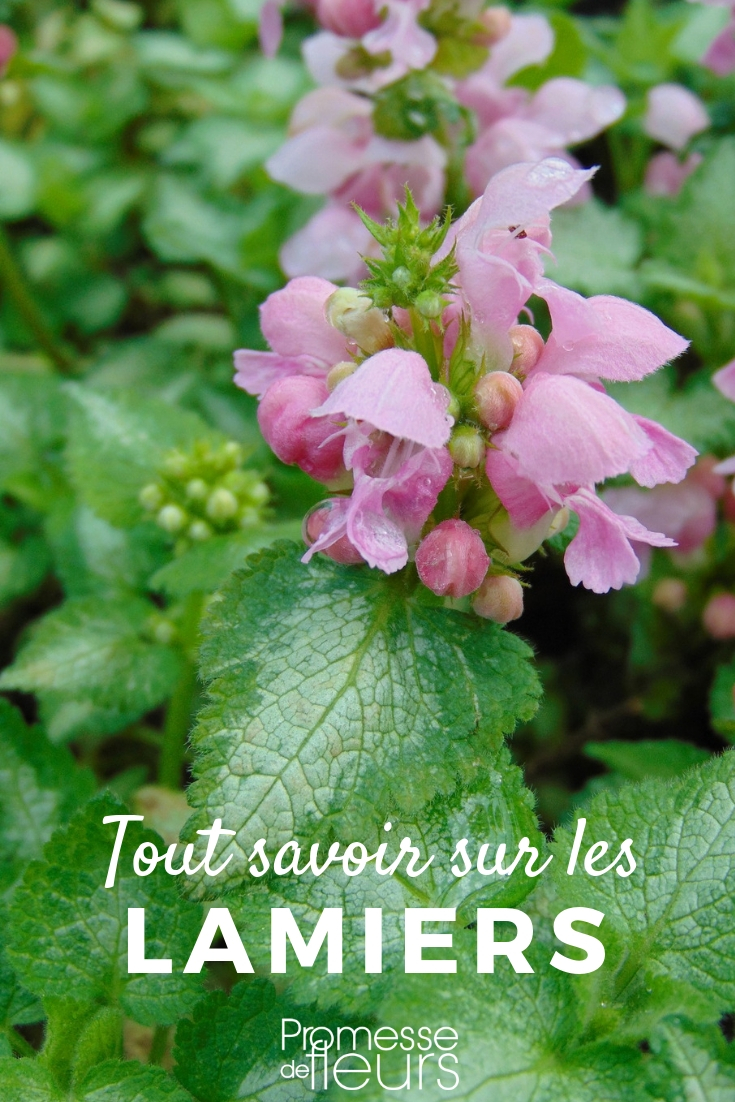































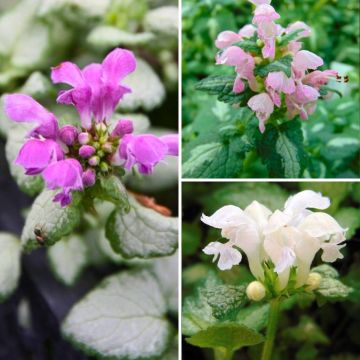
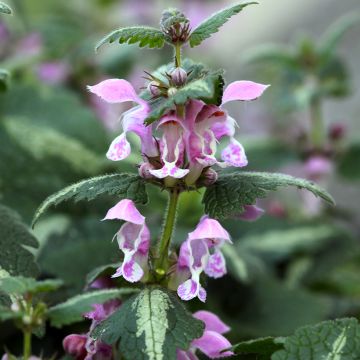
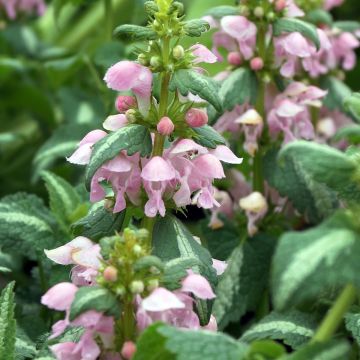

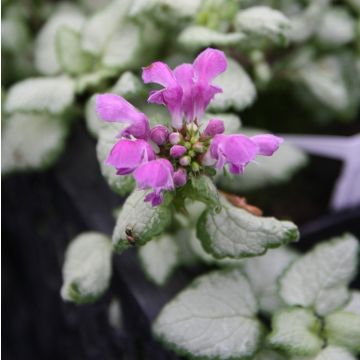
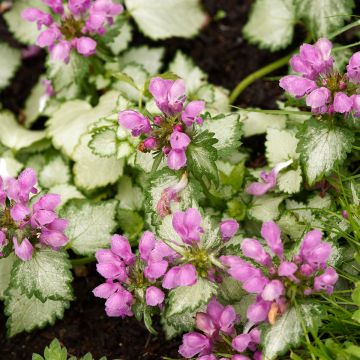
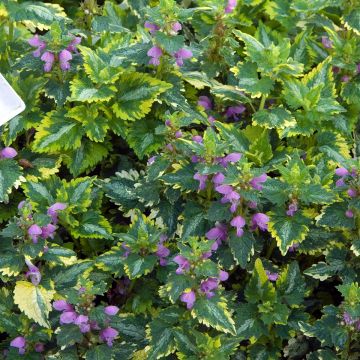

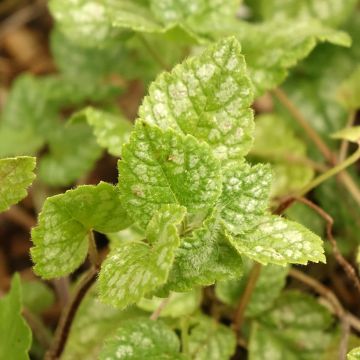

Feedbacks